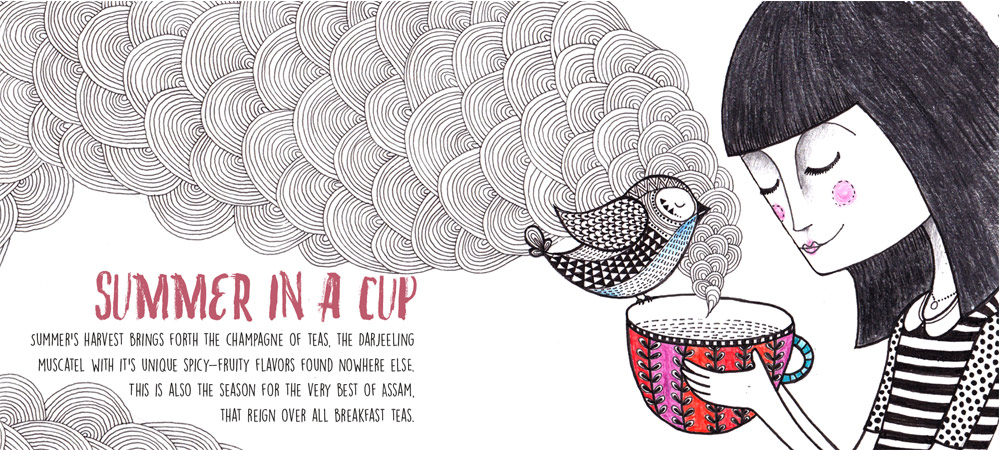The end of summer is time for the second main harvest of the year, the second flush. Its the season when tea plants, in a manner of saying, climax. The leaves that are picked now are far more mature, and tend to produce a robust liquor. This is true for both Darjeeling and Assam summer teas, but then again, there are striking differences between the two.
The Darjeeling second flush teas are regarded as the Champagne of Teas and for an interesting reason too. The teas of this season boast what is known as a muscatel flavor, named after the Muscat grapes. The muscatel flavor is quite an elusive sensory experience and very difficult to describe. The connoisseur will describe it as a musky spiciness while regular folks will think of it as a sweet fruity-spicy flavor. But no one can really pin the actual taste of it. Much like wine, no two muscatel teas taste alike and theres a new one to look forward to every year. Whats more, every tea garden has a short window of 12-15 days during which specific bushes within the garden produce the leaves that carry the muscatel flavour. It’s that exclusive, and that special!
But the best summer teas are probably from Assam; the region is known to produce its best teas this season ones that make their way to breakfast cups all over the world from the milky Indian chai or the sweet builders brew. Dark, bold, robust, and topped with classic flavors of malt and woody astringency, summer teas from Assam are a real treat.
No mention of summer teas can discount the other rare teas that are produced this time of the year, the organic clonal teas from Temi in Sikkim, earthy and smooth green teas from Kangra, some exclusive picks from Dooars and refreshing teas from the Nilgiris… without doubt, summer teas offer the widest and best choice from across the gardens in the country.
Illustration by Handmade by Radhika

